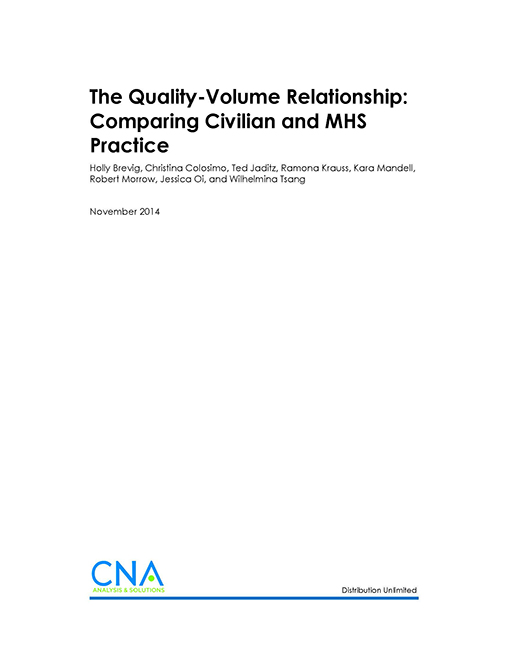Peer-reviewed medical journals frequently publish articles that show that high volume is generally correlated with better outcomes. High volume surgeons have lower complication rates, lower re-operation rates, lower readmission rates, lower mortality rates, and are faster in the operating room. Patients who frequent high-volume hospitals have lower mortality rates, lower complication rates, lower re-admission rates, and shorter length of stay. For many procedures, particularly those with a high degree of risk, the literature provides guidance on how many procedures are enough to lower the likelihood of adverse events.
This report evaluates the Military Health System (MHS) according to the standards in the quality-volume literature. We start with a literature review of recent quality-volume studies to identify current accepted volume targets associated with the best patient outcomes. Next, we survey the literature to understand how civilian institutions, including hospitals, government agencies, non-profits, and insurance companies, respond to these findings. Finally, we analyze administrative data from the MHS and compared it to findings from the literature and civilian health systems.
These findings have a tremendous influence on how medicine is practiced. Hospitals advertise their procedure volumes to the public as a marketing strategy. The Leapfrog Group, a non-profit group focused on reducing medical errors and improving hospital safety, provides safety ratings based in part on volume information voluntarily provided by hospitals. Insurance companies encourage beneficiaries to have their surgeries performed in facilities that meet recommended volume targets. State governments provide hospital volume data to the public and encourage patients to frequent high-volume providers.
Military hospitals lag behind civilian hospitals. It is generally the case that most patients in civilian settings receive care in high volume settings, while most MHS patients receive care in low-volume settings. Few MHS clinicians meet the volume targets from the literature.
The MHS has the opportunity to change this. There are nearly 10 million TRICARE beneficiaries, so there is ample volume to support a system designed according to the principles of the quality-volume literature. High volume programs for major surgeries would improve average quality of care and allow MHS surgeons to achieve high levels of currency and proficiency.
Approval for Public Release.
Distribution Unlimited. Specific authority: N00014-11-D-0323.
Details
- Pages: 58
- Document Number: DIM-2014-U-009221-Final
- Publication Date: 11/1/2014
